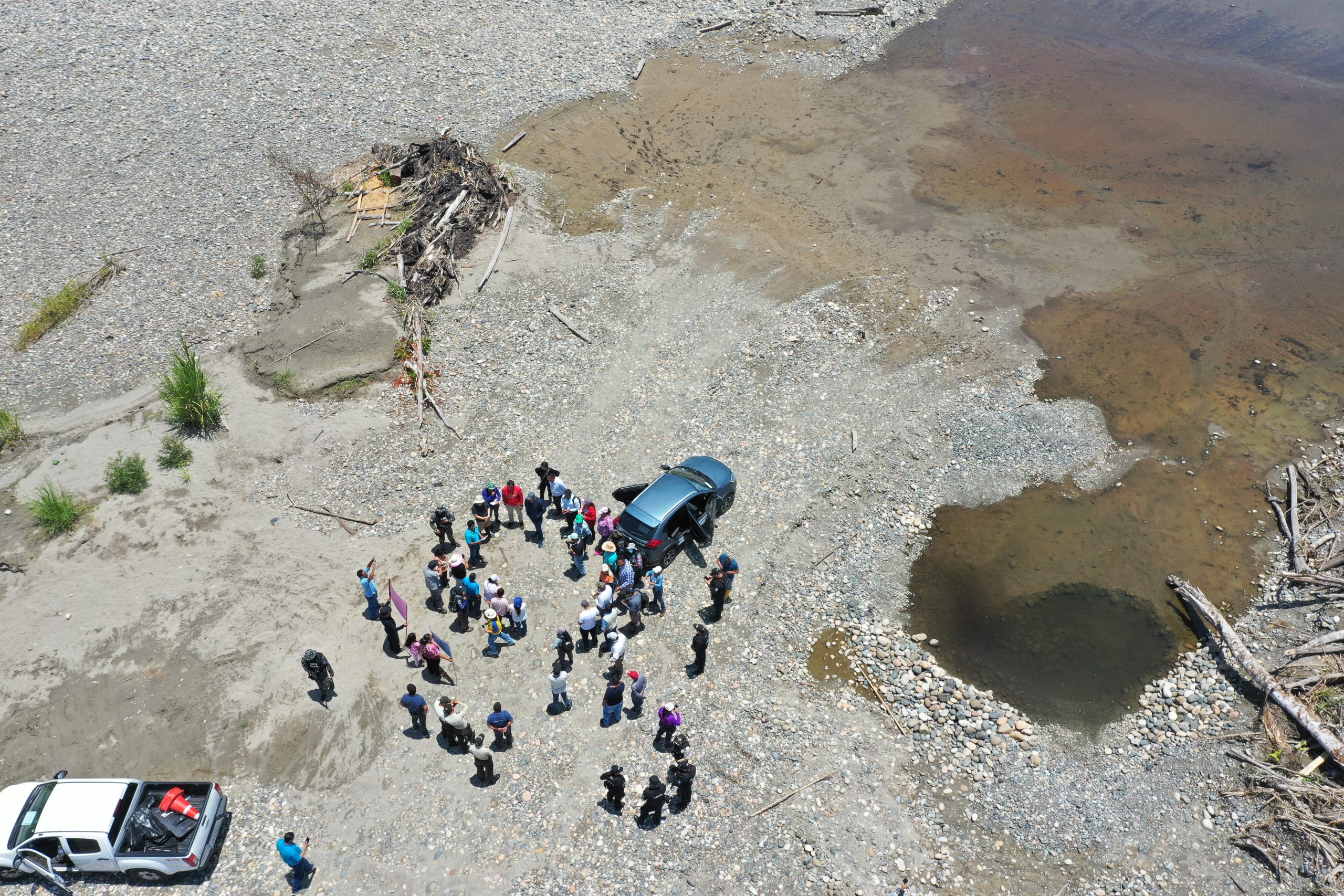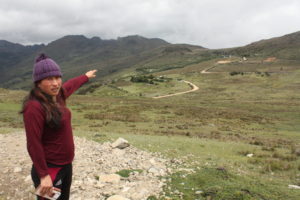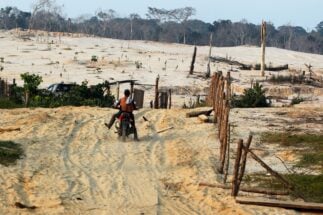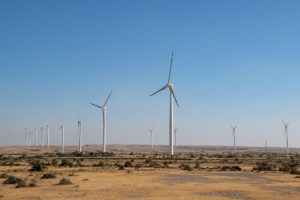In recent months, representatives of indigenous groups in Ecuador have been negotiating with the government of President Guillermo Lasso, demanding measures to ensure effective protection of the environment and peoples of the country’s Amazon. As talks drag on, however, many parts of Ecuador continue to face the threat of damage or destruction, including the Napo, a river hit by the unrelenting growth of mining activity along its banks.
The Napo is a tributary of the Amazon and, at around 1,100 kilometres in length, the longest river in the Ecuadorian Amazon, flowing through the dense jungle of the country’s east before entering neighbouring Peru. Due to the lack of roads in this remote region, the river is the main axis for transport and commerce with the country’s more populated west and centre.
The province of Napo, to which the river lends its name, is also home to indigenous Kichwa communities, as well as 70% of the country’s protected areas.

“The protected areas are home and refuge to a large number of flora and fauna that make this part of the country one of the most biodiverse,” says a report by the Ecuadorian Foundation for Ecological Studies. “Napo province’s location allows it to encompass páramo [high altitude moorland] zones on its western side, to tropical rainforests in its lower Amazonian plain on the eastern side.”
In the last decade, mining has expanded in this corner of the county. According to a report by the Monitoring of the Andean Amazon Project (MAAP), the area covered by mining activity in Napo province has grown by over 200 times in little more than two decades, rising from just 2.6 hectares in 1996, to nearly 556.8 hectares in 2020. Most of this area is dedicated to the extraction of gold and quarrying. There is estimated to be nearly 300 mining concessions in the province.
In most cases, those mining activities are artisanal and semi-mechanised, says José Moreno, an activist and president of the environmental organisation Napo Vive. “They have a high environmental impact, they do not contemplate control measures and do not comply with regulations,” he told Diálogo Chino.
Heavy metals in the Napo River
Analysis of water samples from areas of the Napo river have confirmed that levels of heavy metals such as copper, iron, lead, aluminium and manganese exceed the limits for the preservation of aquatic life and wildlife.
A report from the Ikiam Amazon Regional University in Napo’s provincial capital, Tena, found an absence of aquatic macroinvertebrates in 35% of the locations they analysed, something they described as “a warning of the degree of contamination of these rivers”. These insect species are vital to nutrient recycling in freshwater ecosystems, and their presence can serve as an indicator of a stream’s health.
Another of the study’s conclusions states that about 90% of the samples analysed showed toxicity, indicating “chronic contamination” at the sites evaluated.

“In a river, its course or flow is very important, as well as the chemistry of the water. All of this is connected and affects the biota, the set of species of plants, animals and other organisms that inhabit an immense area of the Amazon. It [mining] destroys everything by releasing toxic chemicals and sediments.”

Celi’s testimony to the devastation caused by mining along the Napo and its tributaries is telling. The damage, he says, begins on the river bank at Yutzupino, a small settlement near the town of Puerto Napo, just south of Tena. It continues further upstream, to the junction of the Anzu and the Jatunyacu rivers, which form the start of the Napo, and beyond.
“People have always extracted gold from these sites,” Celi explains. “Yutzupino was already affected because they have extracted a lot of material in an ‘anti-technical’ way and with highly polluting chemicals that go into the water. This stream, which used to have pools, is now completely flat and full of sediment. The water is very red due to so much sediment and suspension [of its flow]. These fine sediments, because they are oxidised, also accumulate other metals.”
Heavy metals, such as mercury, are used in many mining operations here in Napo. The World Health Organization (WHO) warns that human exposure to this material can cause damage to the nervous system, immune system, digestive system, lungs and kidneys.
Activity continues to grow
According to Celi, mining activity has intensified as the price paid for gold has risen: “There are buyers who come to the river. Before it was 35 [US] dollars a gram and now they are paying $43.”
The evidence of pollution is so alarming that in early 2022 the government announced a temporary ban on all mining in Napo province. Miners have since taken legal action in attempt to recover their heavy machinery and resume operations in the area.
On 14 February, the then Minister of Energy and Non-Renewable Natural Resources, Juan Carlos Bermeo, announced that all mining activities in the Yutzupino area, near Tena, would be suspended in order to protect the environment and the communities in the area.
“The national government is committed to legal and responsible mining that generates resources and opportunities for Ecuadorians, in absolute accordance with current laws and regulations,” the official said at the time.
But in the months since, the government’s announcements have not been fulfilled. Environmental organisations and leaders consulted by Diálogo Chino confirmed that artisanal mining activity has not only continued, but increased.
What is happening here is a mockery for the more than 160,000 inhabitants of Napo province, those most affected by the pollution
“We have travelled along the banks of the river and its tributaries in the second half of 2022. Mining activities persist, even in the early morning,” Kambac Alvarado, a Kichwa leader and environmental activist from Tena, told Diálogo Chino. “They are devouring our forest. The mafias have no compassion and the government has no control.”
Since enforcement operations against illegal mining began in Yutzupino in February, 124 diggers, three trucks, 84 motorised pumps, 79 water suction motors, nearly 13,000 litres of fuel, seven containers of chemical substances and 12 motors have been seized, according to the Ministry of Government.
However, for some, this is only a start. “What is happening here is a mockery for the more than 160,000 inhabitants of Napo province, those most affected by the pollution,” says José Moreno of the Napo Vive collective. “Corrupt judges are allowing them to return to the work of bleeding nature with judicial measures that make no sense.”
This situation has forced the government to reconsider the urgency of the creation of a water protection system under state control as part of the National System of Protected Areas, with President Lasso himself pointing to the need for better safeguards over the resource.
The issue is set to be one of the eight questions included in a far-reaching referendum to be held in early 2023, in which the public will vote on a number of contentious national issues, including the size of the national assembly and military powers in fighting drug trafficking.

But the government faces calls for increased urgency and action. On 6 October, hundreds of people marched through the streets of the capital of Napo, Tena, to demand concrete actions from the government to stop illegal mining. The march was organised by several NGOs, including Napo Vive, Napo Resiste and the Black and Indigenous Liberation Movement.
The spokesperson for the latter, Leonardo Cerda, an Amazonian Kichwa, told Diálogo Chino of the demands of the government and its agencies: that the Ministry of Environment, Water and Ecological Transition present reports so that the province of Napo can be “declared an environmental emergency”; that the ministries of environment and energy, and agencies overseeing energy and non-renewable natural resources all comply with the ruling that requires the suspension of all mining activities; and that the Technical Secretariat of the Amazon, a government agency involved in Amazon planning and conservation, carry out “a comprehensive intervention” in the communities affected by mining activities.
According to the environment ministry, as many as 7,000 hectares have been destroyed by illegal mining in Napo province, with much destruction felt in the Yutzupino area.
Fauna impacted
Beyond local communities feeling the impacts of illegal mining, other species are feeling the effects of the expanding activity. “Deforestation is highly related to mining activity,” the Ikiam University study begins, “and can lead to the removal of individuals of rare species, uncommon or not yet known to science in the Amazon basin. This process is one of the main causes of species extinction.”

In light of such risks, the environmental protection unit of the National Police have also been active in investigations over the impact of mining and carry out operations in the area, including the rescue of wildlife affected by works. Its director, sub-lieutenant Jorge Andrade, affirms the problems of human-wildlife conflict.
“The damage in Yutzupino has caused wildlife species to move from their natural habitat to look for food closer and closer to populated areas,” Andrade explains. “In this case, for example, the boa constrictor may be eating [domesticated] chickens or animals that are the desired size for this specimen.”
Faced with these problems, Celi calls for the area to be declared an emergency and for comprehensive solutions that encourage inhabitants to respect nature, as well as improving access to decent jobs that allow them to escape poverty – and together lessen the lure of illegal mining.
“You see a lot of people doing what seems to be the last thing they will ever do in their lives. They do it voraciously and desperately. Thousands working on the sly in the dark of night,” Celi says.
“This has to stop and the government must keep its eyes on the sacred forest.”









